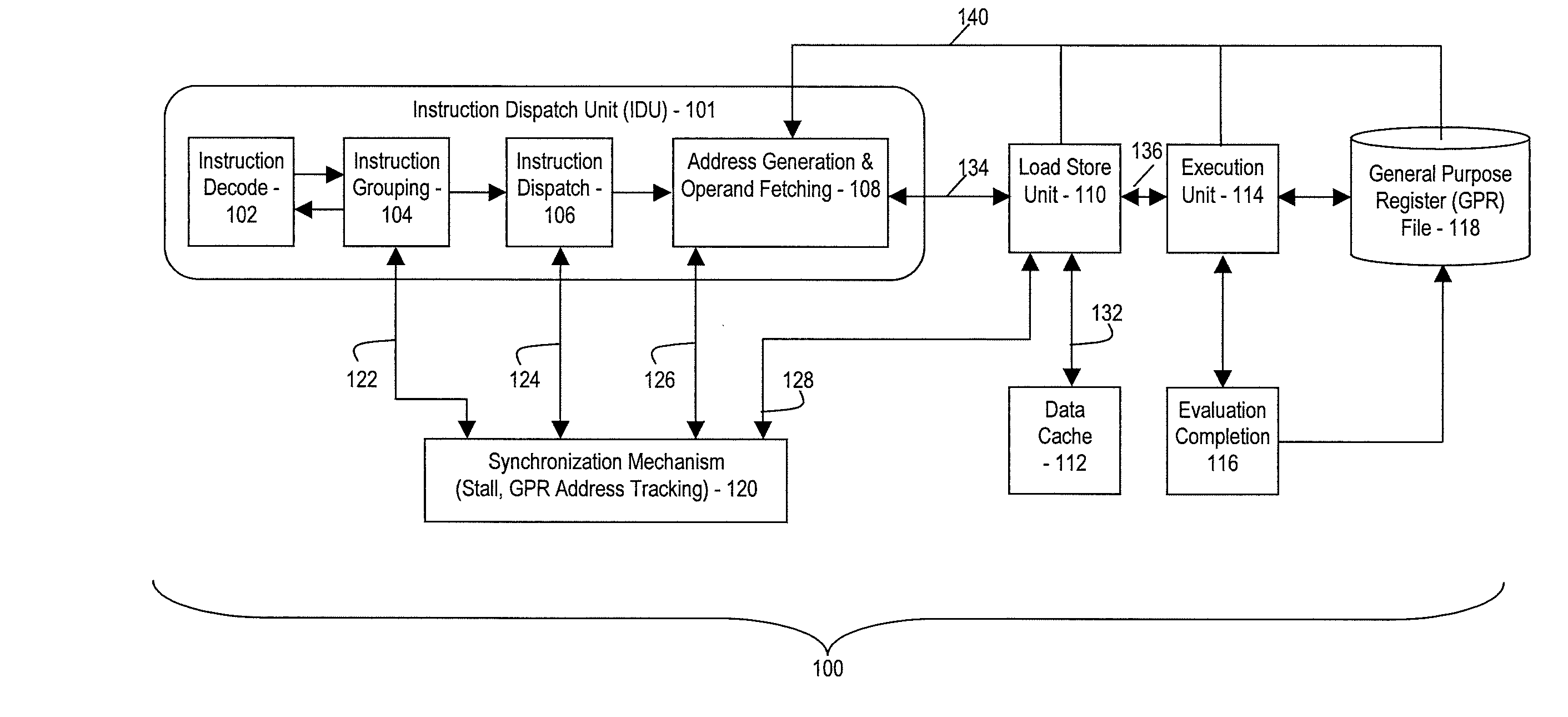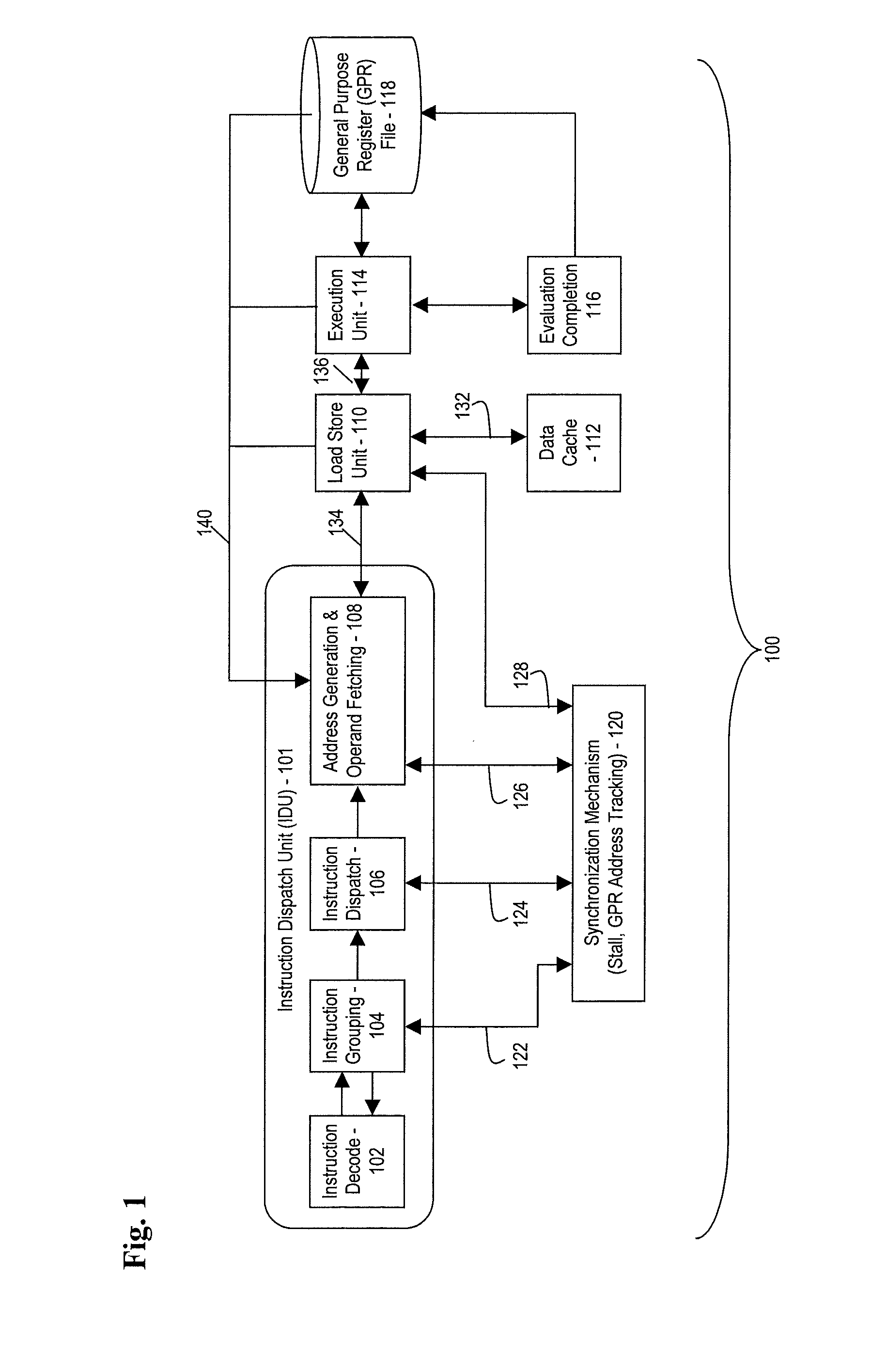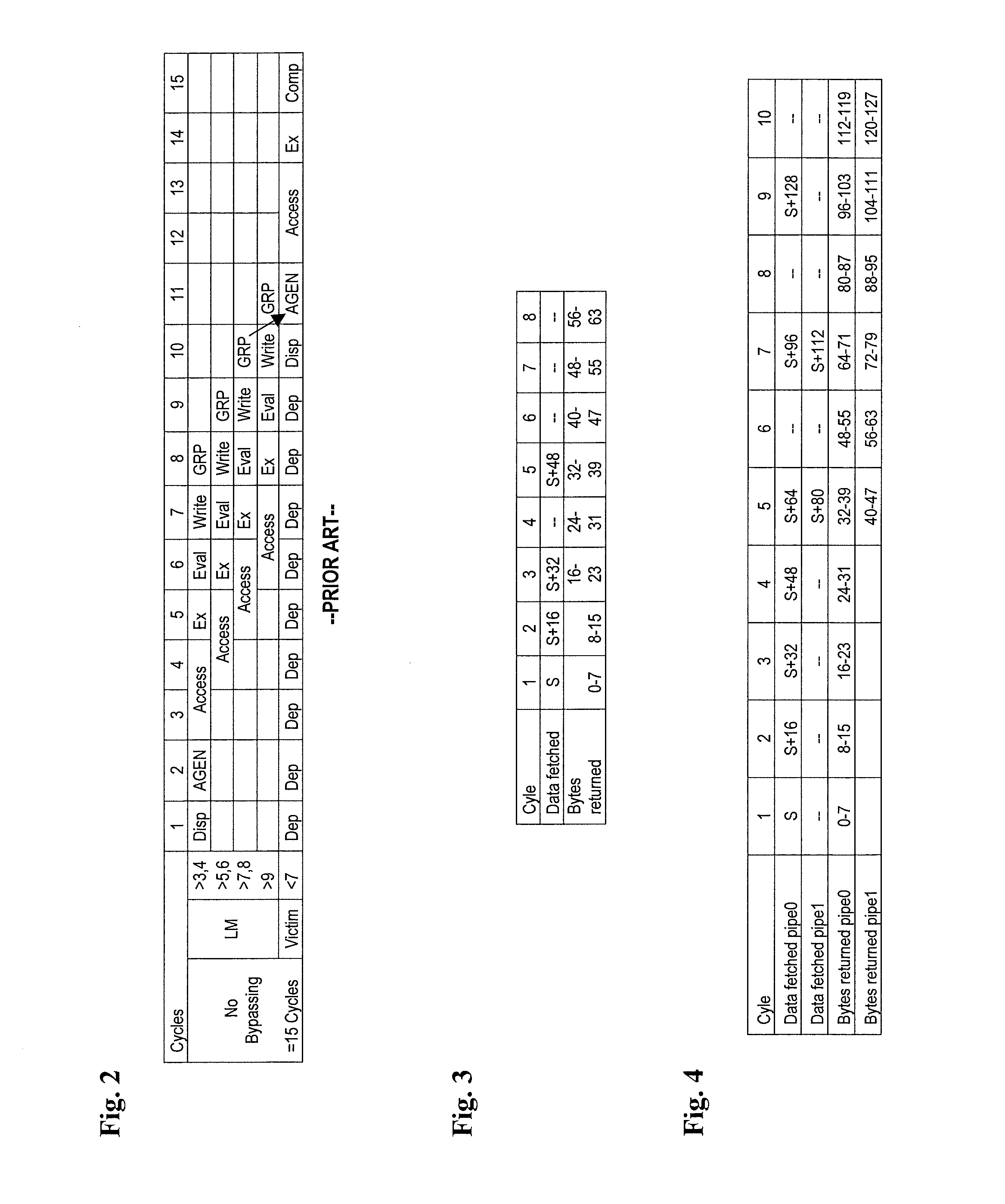Processor and method for synchronous load multiple fetching sequence and pipeline stage result tracking to facilitate early address generation interlock bypass
a processing method and synchronous load technology, applied in the field of high-performance computer systems, can solve the problems of pipeline stalling at the point of consumption, adversely affecting performance, and limited pipelining,
- Summary
- Abstract
- Description
- Claims
- Application Information
AI Technical Summary
Problems solved by technology
Method used
Image
Examples
Embodiment Construction
[0020]The teachings herein provide a mechanism to track and early bypass Load Multiple (LM) type instructions for general purpose register (GPR) updates. This includes operand accesses (such as Opfetch) involving address generation (AGEN), fetching through a local cache, and formatting returns of the fetched data in a predictable pattern. This pattern is replicated in an address generation interlock (AGI) tracking mechanism through instruction expansion, thus allowing early bypassing of GPR update values into AGEN stages before they are committed into the GPR. In various embodiments, the fetching and tracking patterns differ, such as between variants of LM instructions. For instance, in one embodiment, there is a Load Multiple Grand (LMG) variant that loads a double word (DW) into each register, whereas a base LM loads only the lower word (32 bits) of each GPR. Generally, throughout the sequence, the Opfetch and register tracking mechanisms are kept in lockstep via stall broadcastin...
PUM
 Login to View More
Login to View More Abstract
Description
Claims
Application Information
 Login to View More
Login to View More - R&D
- Intellectual Property
- Life Sciences
- Materials
- Tech Scout
- Unparalleled Data Quality
- Higher Quality Content
- 60% Fewer Hallucinations
Browse by: Latest US Patents, China's latest patents, Technical Efficacy Thesaurus, Application Domain, Technology Topic, Popular Technical Reports.
© 2025 PatSnap. All rights reserved.Legal|Privacy policy|Modern Slavery Act Transparency Statement|Sitemap|About US| Contact US: help@patsnap.com



